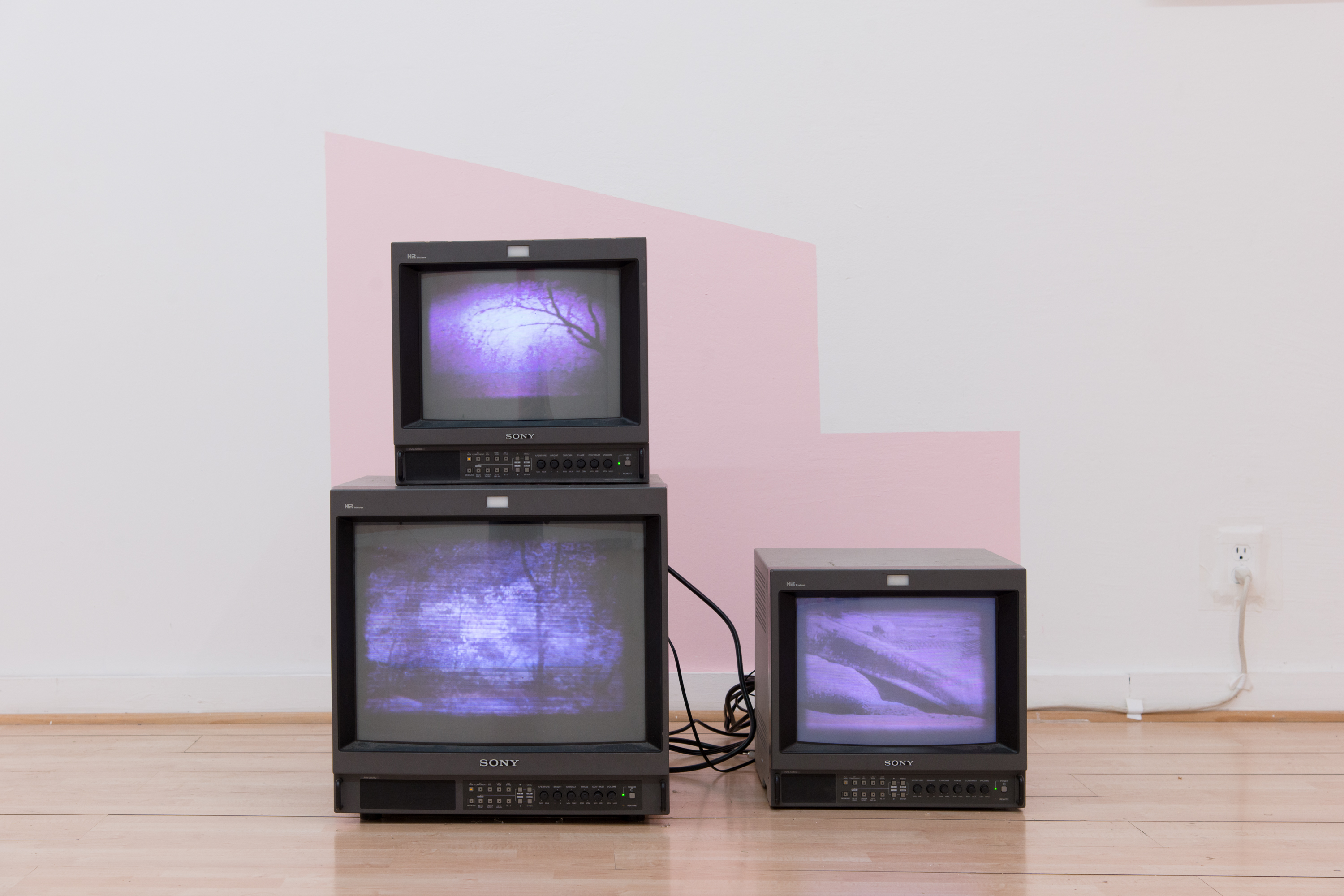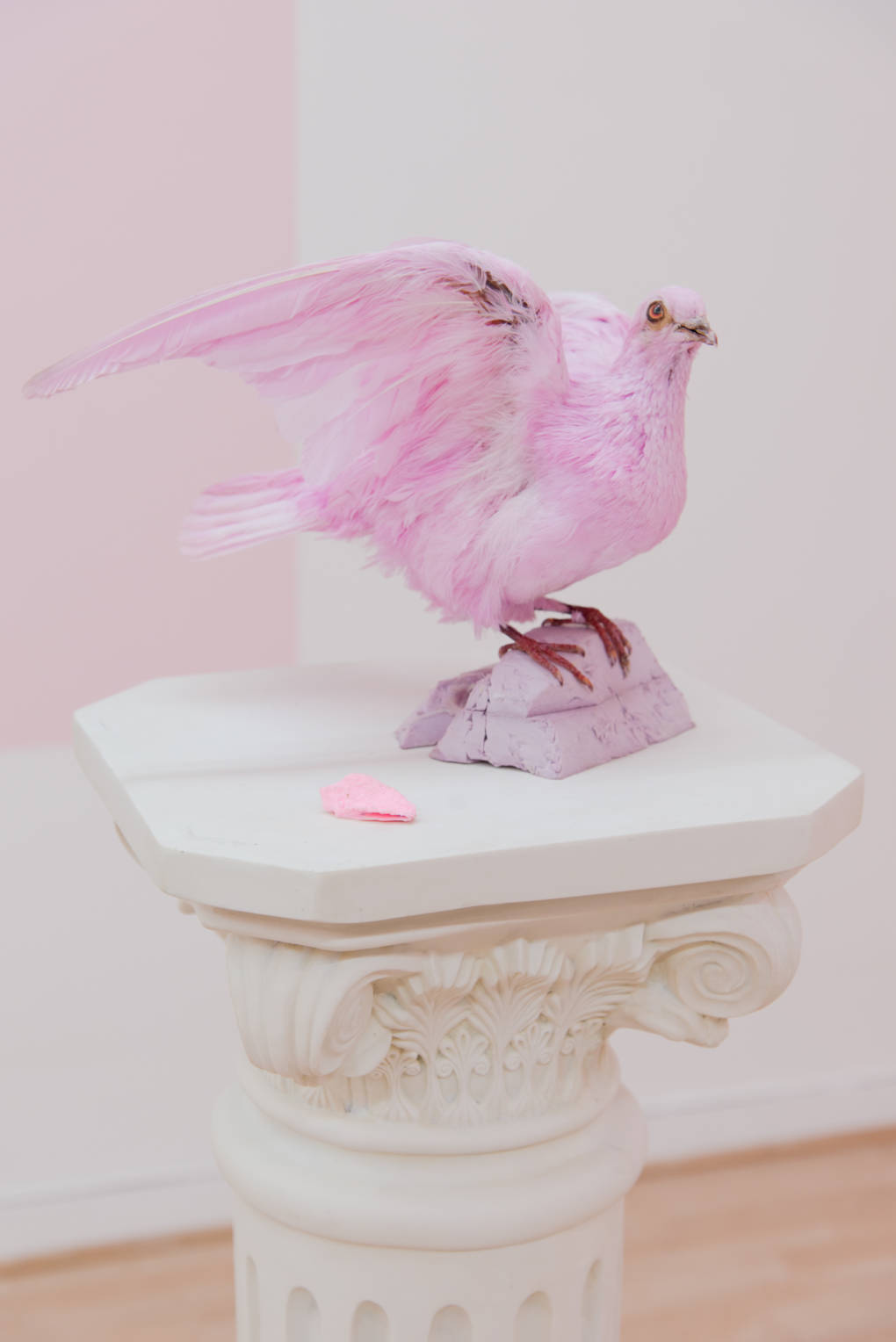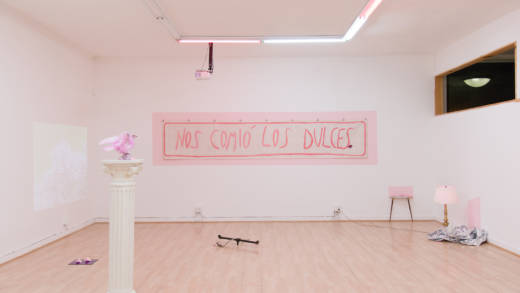Scientists who wish to highlight the incredible — and largely destructive — impact humans have had on the planet have proposed the term “Anthropocene” for a new geological epoch. This term has been gaining popularity, but epochs come and go, and if humans have brought about the end of the Holocene so quickly, can we be trusted with our own?
The answer is, of course, “no,” and Sofía Córdova’s The Gentle Voice That Talks To You Won’t Talk Forever at Oakland’s City Limits Gallery is a look at what might follow the Anthropocene. The outlook isn’t all that bad, but you might have to be non-human to fully appreciate it.

Córdova speculates about a fictitious-yet-likely future in which nature has survived humanity, and though the exhibition doesn’t make the extinction of our young species explicit, it seems like a strong possibility. A three-channel 8mm and digital video lends an air of horror to the exhibition. Two of the flickering black and purple channels record cherry trees in a Seoul park devoid of human figures. Buildings and monuments are sometimes seen through the trees, but the deserted park is eerie. It’s a ghost town in the center of a metropolis. The third channel features the decomposing carcass of a blue whale on a Bolinas beach. Though these scenes are forbidding, they initially clash with the rest of the exhibition.
Looking on from the center of the gallery is a pink taxidermied dove perched on a pink rock. The dove rests on a classical column and seems to be holding court. None of the terror and bleakness of the video is present. In fact, whatever changes in the world the video documents seems to have allowed for the dove to reign — for peace to reign. This realization negates the horror in the video; it simply documents a peaceful landscape and the natural process of decay. It’s only from the human perspective that something is wrong; the trees and the birds are fine.

An inspiration for this exhibition is Miharu Takizakura, a 1,000-year-old cherry tree in Fukushima Prefecture, Japan. The tree survived the region’s 2011 earthquake and nuclear disaster and has become a symbol of resilience. Córdova borrows the pale pink of cherry blossoms for nearly everything in the exhibition, including the overhead lights. This vaguely suggests radioactivity but also playfulness or joy, like a post-apocalyptic Instagram-friendly environment in search of participants.



